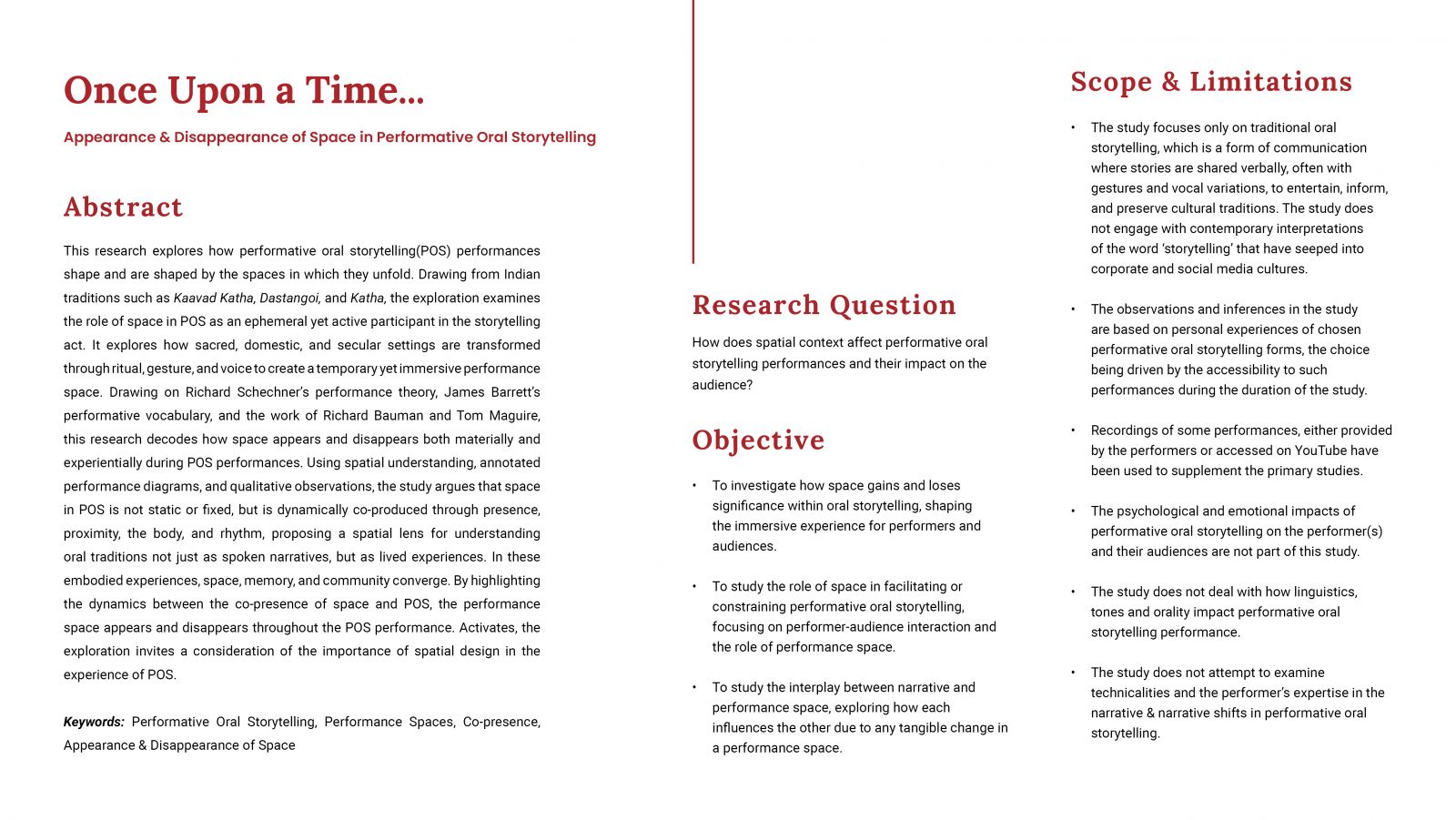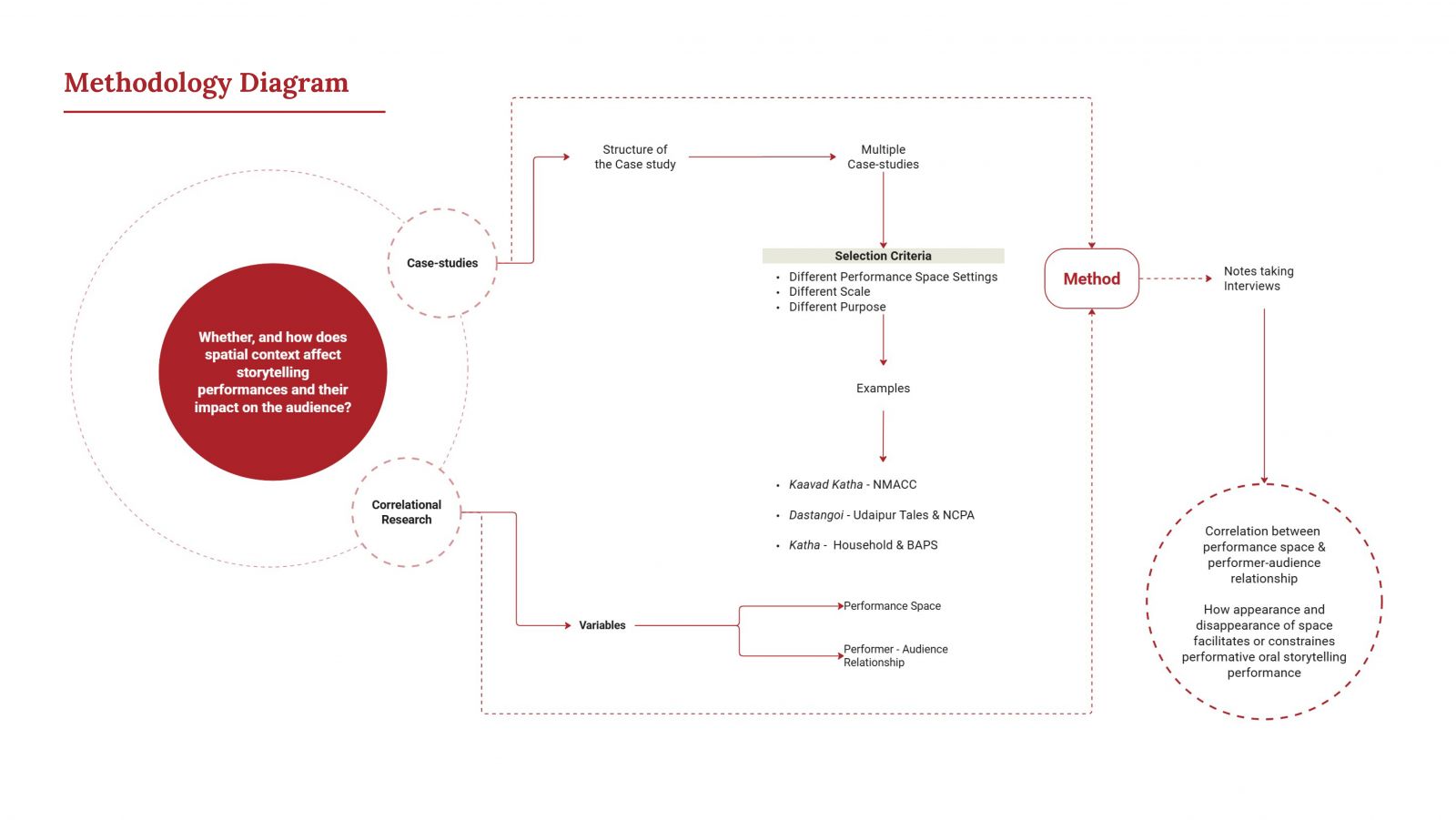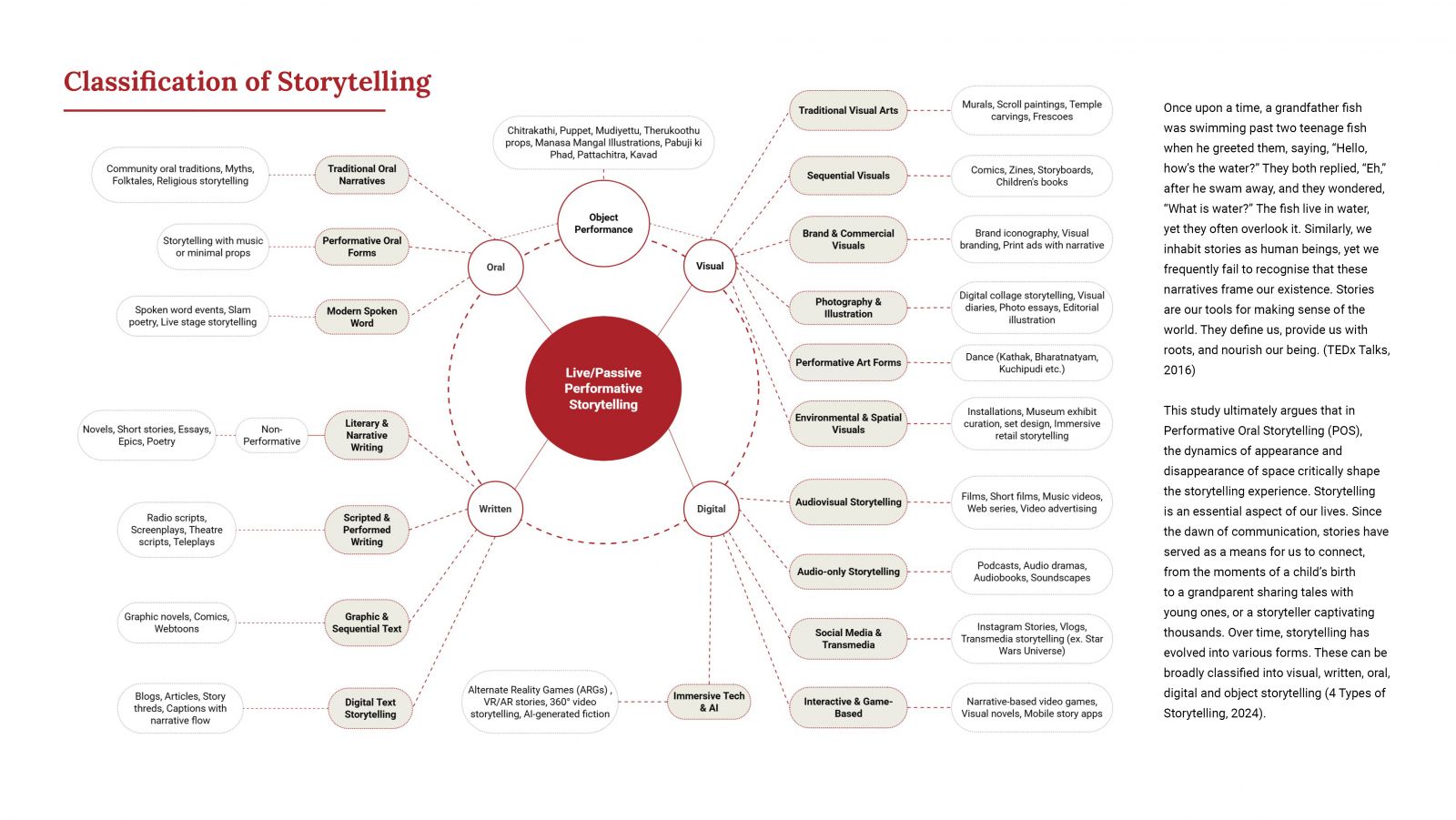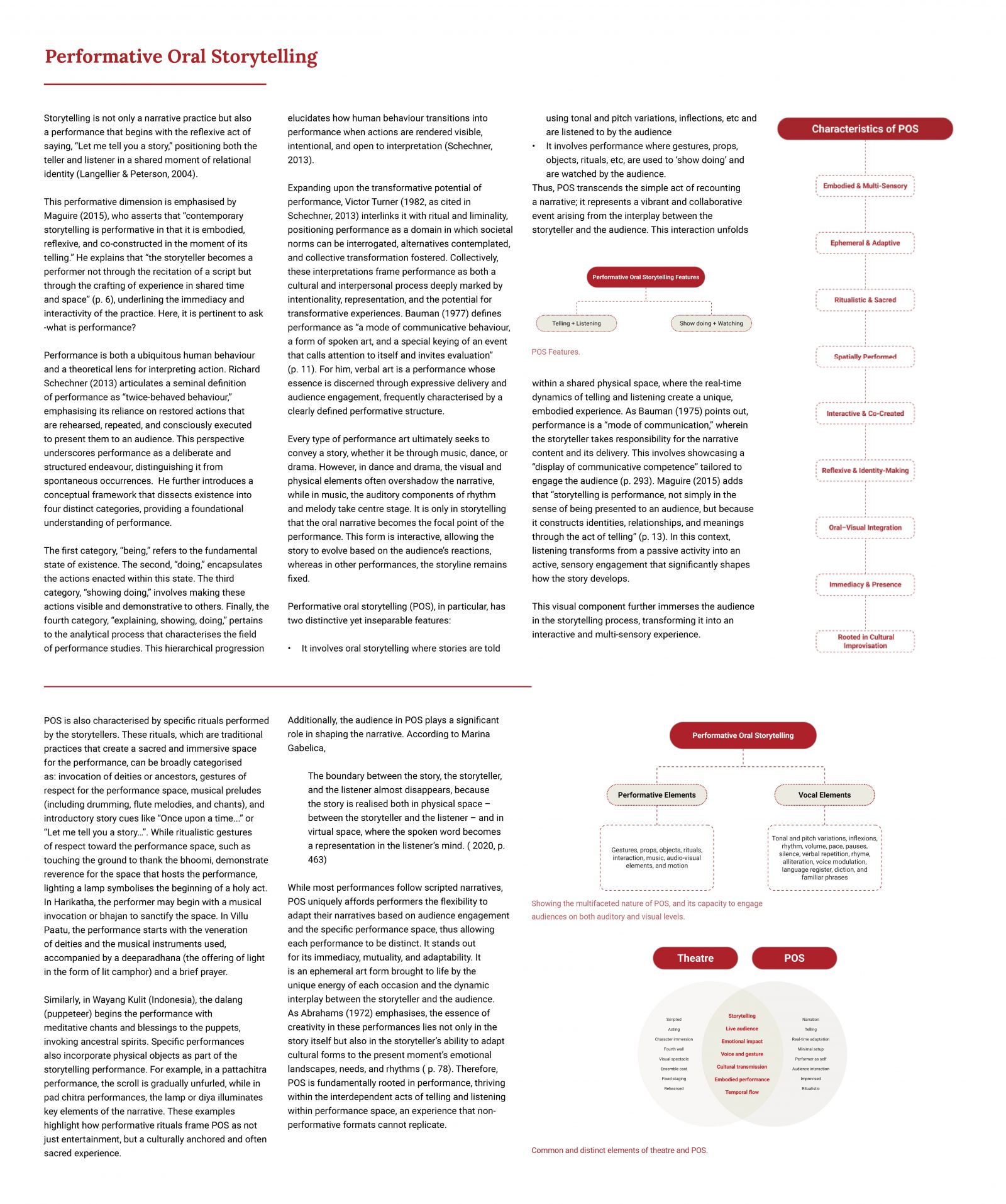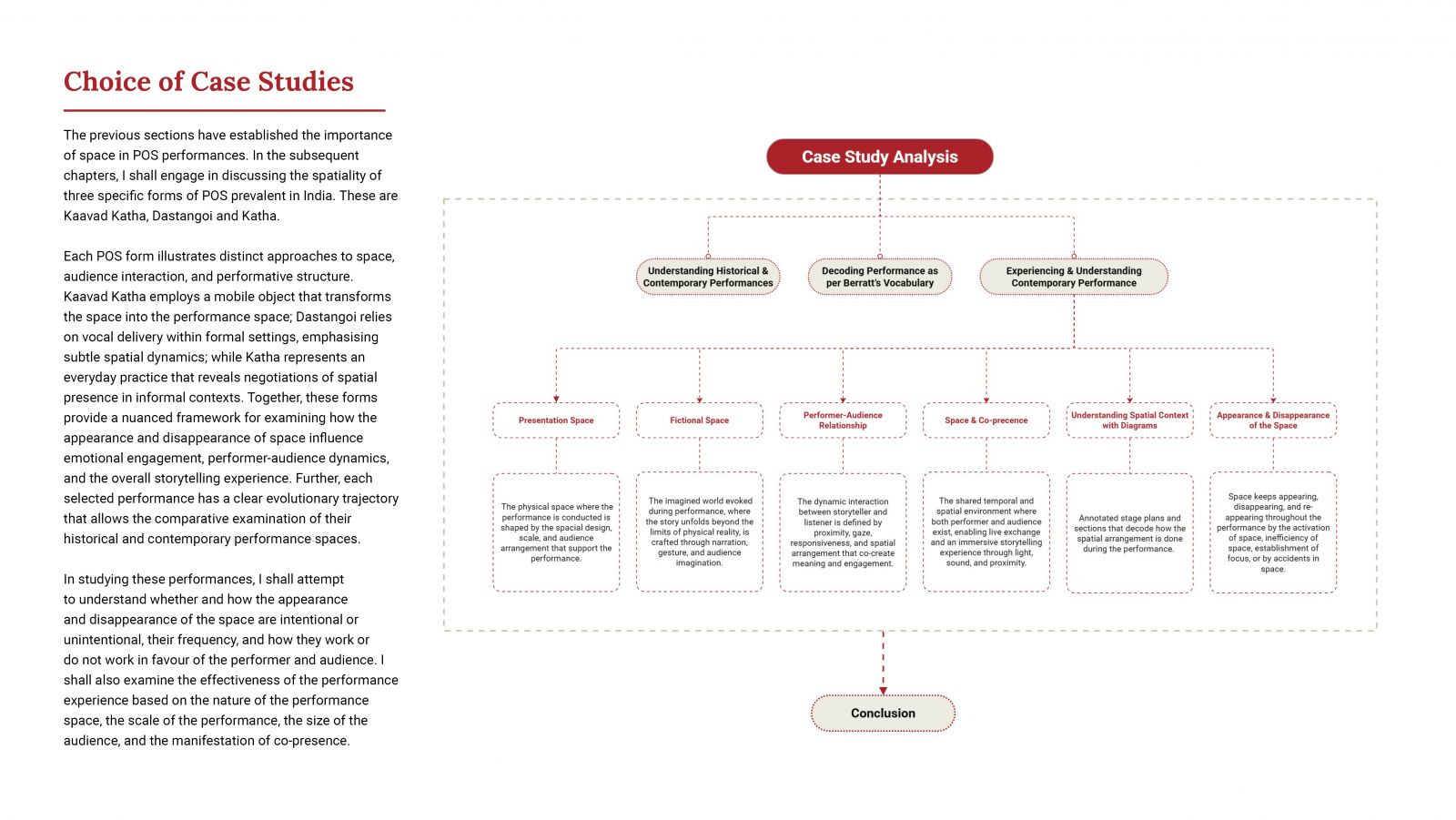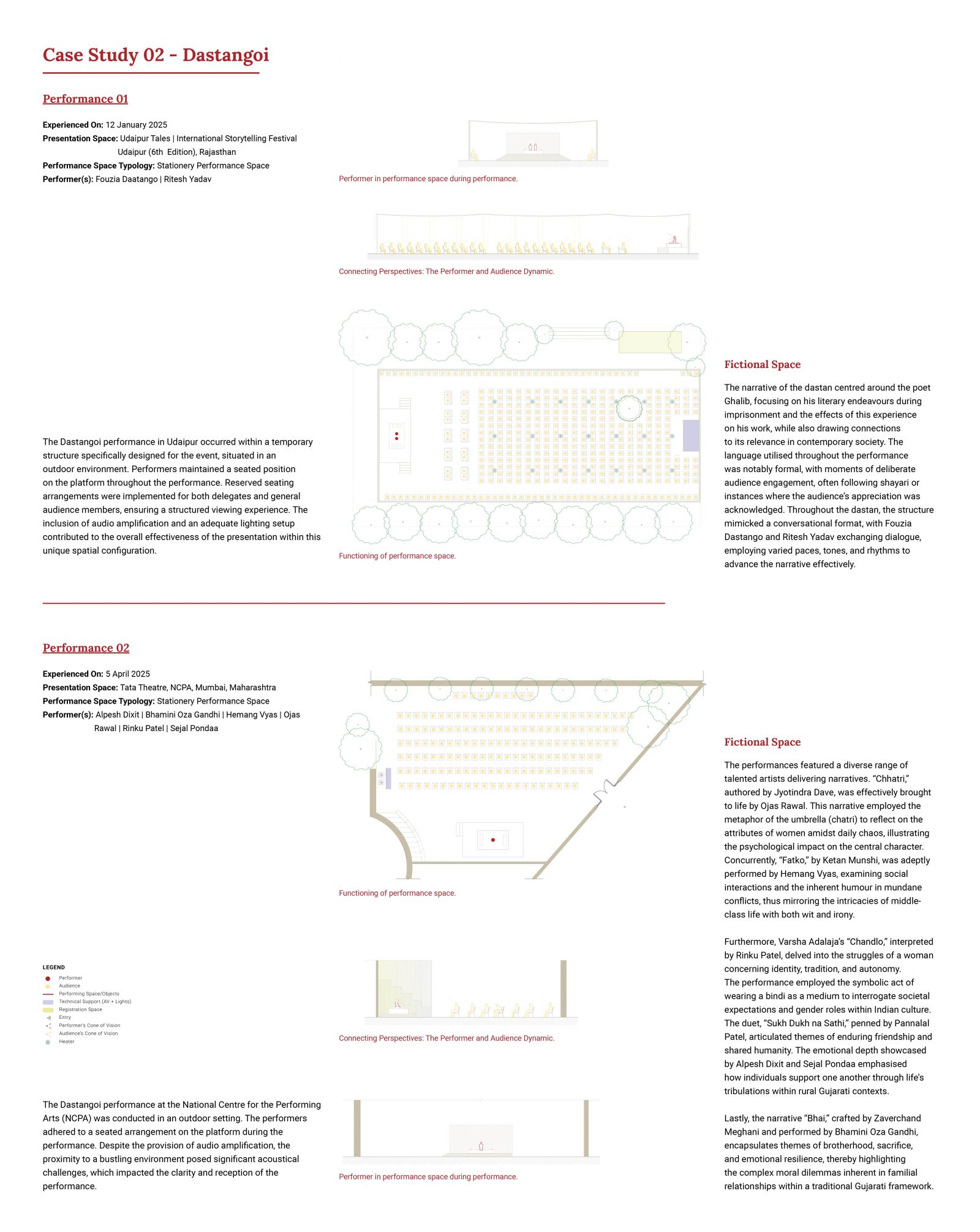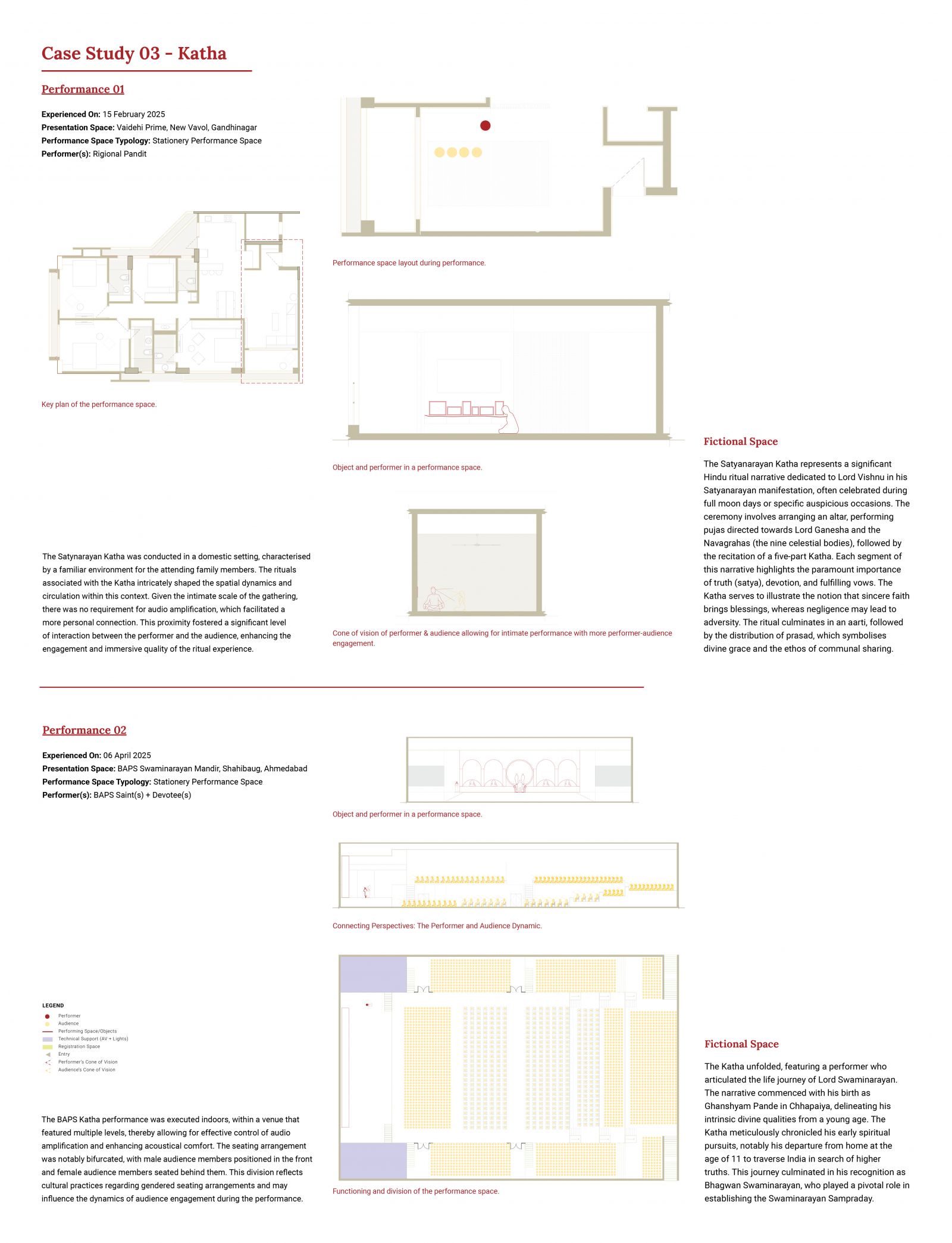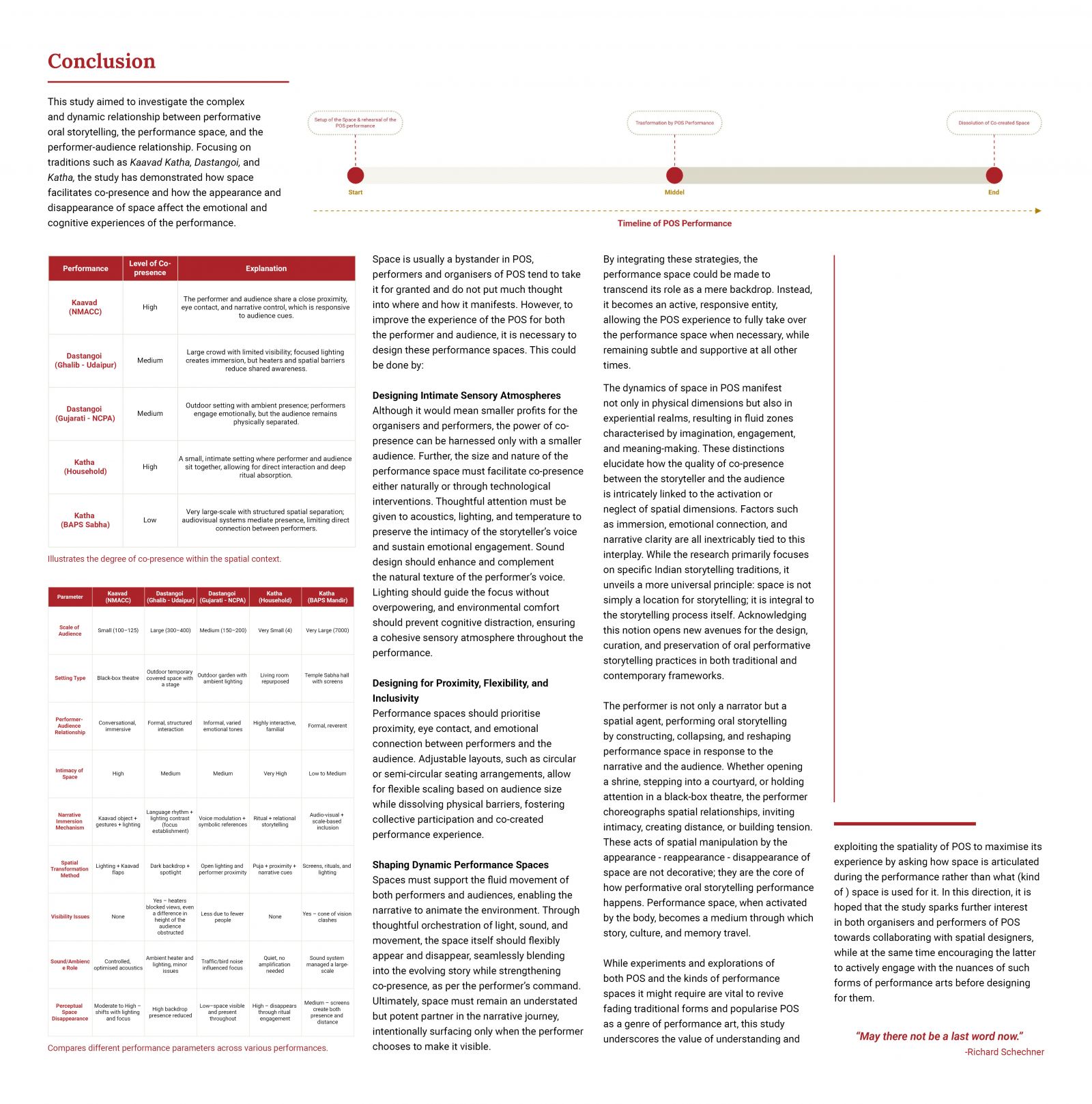Your browser is out-of-date!
For a richer surfing experience on our website, please update your browser. Update my browser now!
For a richer surfing experience on our website, please update your browser. Update my browser now!
Storytelling is everywhere, in our homes, schools, streets, temples and within us. We are told stories before we learn to speak and pass them on long after we learn to walk. They shape how we understand our world and how we perceive our place within it. Yet despite its familiarity, storytelling is often overlooked as a serious art form or spatial experience. It is usually considered something soft and ordinary, yet in reality, it is profound, performative, and communal.
As a student of interior design, I have always been interested in how space shapes emotion, movement, and memory.
Through storytelling, I discovered a cultural form that achieves the same effect through voice, ritual, and the body. This research is born out of that intersection. It is not just about stories, but about how stories are performed through space, and how space, in turn, listens, shapes, and disappears and re-appears.
This work is an exploration of the tangible aspects of the performative space, a journey through living traditions such as Kaavad Katha, Katha, and Dastangoi. It explores how performance creates sacredness in performance space, how proximity fosters emotional immersion, and how the invisible spaces of storytelling live within us even after the performance ends. Click here for high-quality sheets.
